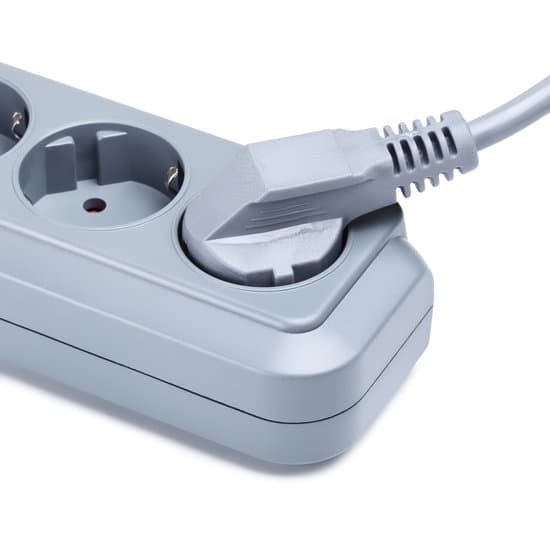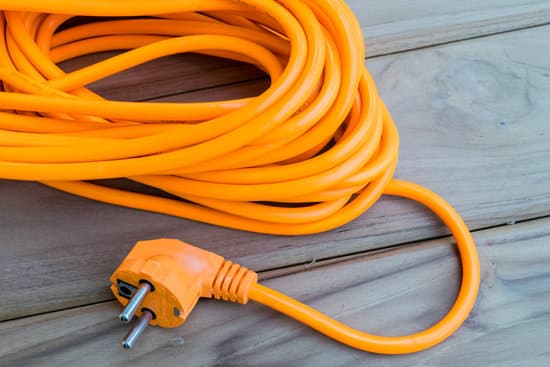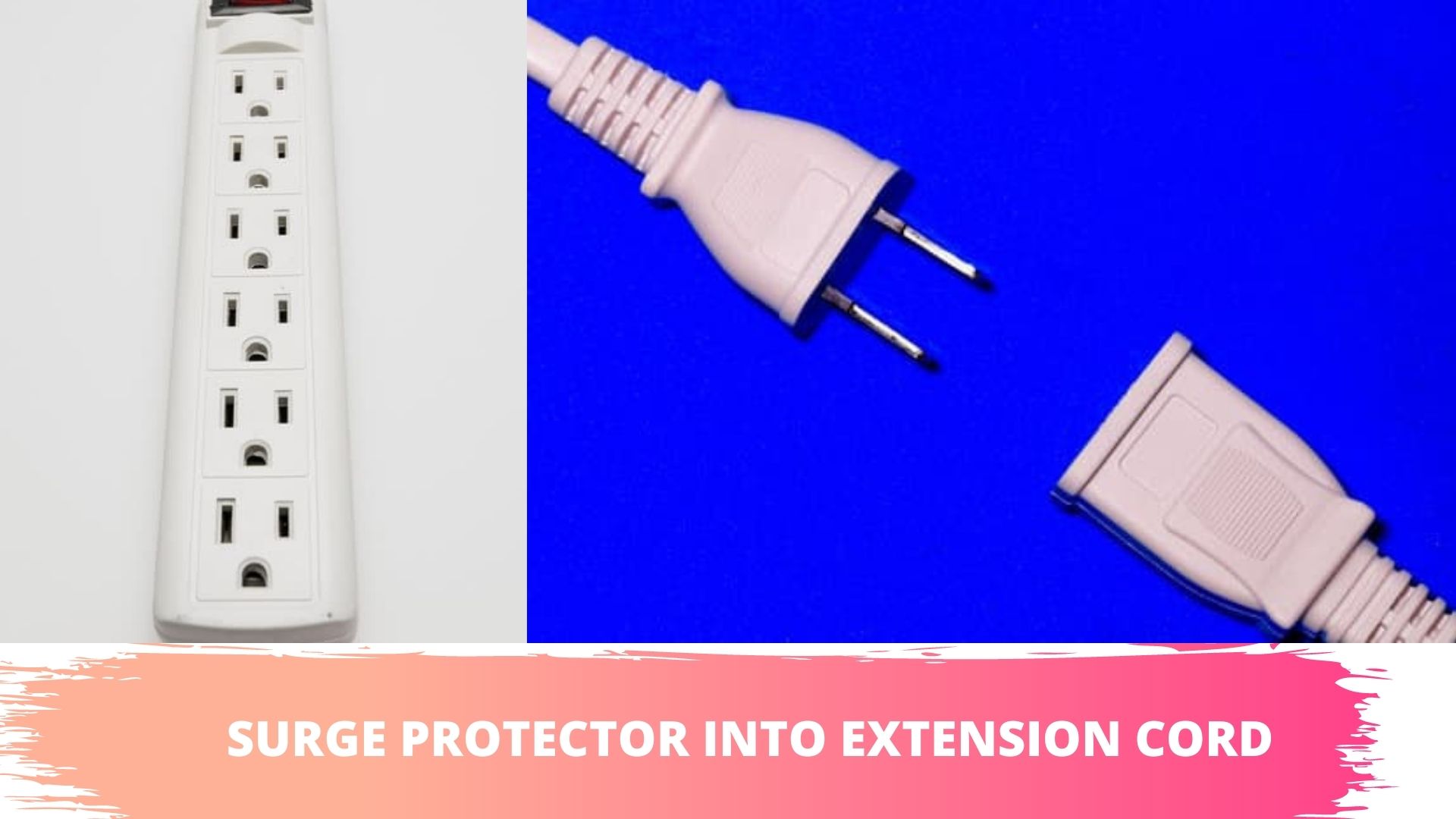Surge protectors are supposed to protect you and your equipment from electrical surges which can occur as a result of lightning strikes, faulty wiring, and the like. But what happens when you plug a surge protector into an extension cord?
Can You Plug Surge Protector Into Extension Cord?
Yes, you can. Physically, the two devices are compatible with one another. The average surge protector has a plug whose prongs can fit into the outlets of the average extension cord. Physically speaking, you won’t encounter any barriers preventing you from connecting a surge protector to an extension cord.
Can you trust it to continue protecting your equipment or will this configuration interrupt its surge protection mechanisms? This is the question that haunts homeowners that are forced to daisy chain surge protectors and extension cords.
They cannot help but wonder whether the tactic is safe. Most of their concerns are caused by electricians and technicians who keep insisting that daisy-chaining is a fire hazard that is just as likely to destroy you and your property.
But is that true? Can you start a fire by plugging a surge protector into an extension cord? How about the reverse? Is it just as dangerous to plug an extension cord into a surge protector?
The broad answer is Yes. Anyone that plugs an extension cord into a surge protector or a surge protector into an extension cord runs the risk of starting a fire. Even worse, they could electrocute themselves and the other members of their household.
However, as you will soon understand if you keep reading, these risks and threats are only present when a consumer fails to take the necessary precautions.
Is It Safe To Plug a Surge protector Into an Extension Cord?
All forms of daisy-chaining are not only dangerous but illegal. A fire inspector can cite you for plugging surge protectors into extension cords. However, If you can secure surge protectors and extension cords in the right gauge and ampacity, you can daisy-chain the devices without creating overloads and starting fires.

Before you celebrate because you don’t live in this town, the National Electric Code says the same thing. That being said, most people will tell you that this practice is only dangerous if the extension cord is too weak and inefficient to carry the load of the appliances attached to the surge protector.
People complain about the dangers of daisy-chaining because they keep buying crappy extension cords and surge protectors that would have started fires even if they hadn’t been daisy-chained.
Every power strip, be it a surge protector or an extension cord, is a fire and electrocution hazard if you overload it. Cheap surge protectors and extension cords with thin wires and a low ampacity are more vulnerable to overloading.
This is the reason why How-To-Geek does not discourage people from plugging surge protectors into extension cords. They specifically use the example of a 14-gauge surge protector that has been plugged into a 14-gauge extension cord.
Why Plug Surge Protector Into Extension Cord?
People daisy chain these devices because, sometimes, a surge protector’s cord isn’t long enough to reach the gadgets they want to use. An extension cord solves this problem. Extension cords are not like ordinary power strips. They have a much longer cable. As their name suggests, you can use them to extend the reach of a surge protector.
If you have to use a power strip, you should prioritize surge protectors. While extension cords extend an outlet’s reach, surge protectors increase the number of outlets whilst also offering surge protection at each of those outlets.
How To Plug A Surge Protector Into Into Extension Cord?
The only way to safely plug a surge protector into an extension cord is to take the following precautions:
1). Rating of an Extension Cord Must Match the Rating of a Surge Protector
You have to match the rating of the extension cord to the rating of the surge protector. This is because the extension cord has to carry the load of all the devices connected to the surge protector.
The extension cord’s ampacity should be equal to or greater than the ampacity of the surge protector.
2). Don’t Use Heavy Load Appliances
Do not use the surge protector to operate power-hungry appliances like space heaters.
You are more likely to overload the surge protector and extension cord. It is worth noting that daisy-chaining increases the distance the current has to travel which, in turn, increases the resistance.
The greater the resistance, the greater the heat generated, the higher the chances of a fire starting. This is why it is safer to stick with weaker gadgets that do not require a lot of power such as computers and phones.
3). Keep it Away from Areas with a Lot of Foot Traffic
CNET wants you to keep surge protectors and extension cords in the open. Do not hide them under rugs. They will overheat. You should also keep them away from areas with a lot of foot traffic. Otherwise, they will wear out. Worn-out cords are more likely to start fires.
4). Use Vetted Cords
You should only use power strips that organizations like Underwriters Laboratories have vetted. A decent gauge and ampacity are irrelevant if the power strip in question doesn’t have a safety rating. The presence of a safety rating tells you that the device was tested and that it met all the relevant safety standards.
Many unrated surge protectors and extension cords are cheap despite their strong gauge and ampacity because they are poorly constructed, which is why they tend to start fires.
5). Never Use Extension Cords permanently
This is supposed to be a temporary solution. You should never daisy chain surge protectors and extension cords permanently. You can use the tactic in emergency situations for a few hours or days.
The fire code in many places allows you to rely on power strips for up to 90 days. But you shouldn’t daisy chain for that long. The more time you spend using extension cords, the more wear and tear they suffer, the greater the chance of something going wrong.
Will A Surge Protector Work Plugged Into An Extension Cord?
Yes, the surge protector will work. Daisy-chaining of this sort cannot affect the surge protection mechanisms of a surge protector. Daisy-chaining only becomes a problem when you connect a surge protector to another surge protector.
Should I Plug An Extension Cord Into A Surge Protector?
No, you should plug an extension cords into wall outlets. However, in truth, this tactic is no different from plugging a surge protector into an extension cord. In fact, in some ways, it is better.

Plugging a surge protector into an extension cord allows you to extend the reach of the surge protector. However, the reverse does something better. Plugging an extension cord into a surge protector allows the appliances attached to the extension cord to take advantage of the surge protector’s surge protection mechanisms.
Plugging Extension Cord Into Surge Protector – How?
For the most part, you don’t have to worry about physical barriers preventing you from plugging an extension cord into a surge protector. If the plug of the extension cord matches the configuration of a surge protector’s outlets, you can connect the two by simply pushing the extension cord’s plug into the surge protector’s outlets.
Of course, you have to pay close attention to the gauge and ampacity. If the extension cord has a high gauge and ampacity, the kind that can accommodate powerful appliances, the power-hungry appliances attached to its outlets may overload the surge protector.
For this reason, i encourage you to match the rating of the extension cord to the rating of the surge protector. This way, you are certain that the surge protector can handle the load of the extension cord.
Stick with 14-gauge wire or greater. The greater the thickness, the more current the extension cords and surge protectors can carry, the lower the chances of an overload happening.
But even if you have the right ampacity and gauge, you are still expected to limit the appliances you attach to devices that do not utilize a lot of power.
The increase in resistance caused by the increase in the distance the current has to travel to reach the appliances on the extension cord means that gadgets that use a lot of electricity could cause overheating.
Is It Dangerous To Use An Extension Cord With A Surge Protector?
The tactic is only dangerous if the surge protectors and extension cords have the wrong rating and gauge. You can also make things worse by using extension cords and surge protectors with damaged and frayed wires.
Another mistake some consumers make is to cover these devices with rugs and carpets. In an effort to use them permanently, others install them behind walls without realizing that such habits encourage overheating.
If your extension cords and surge protectors have the appropriate gauge, and if they are used temporarily and positioned in a well-ventilated location, they shouldn’t present any danger.
Best Extension Cord For Surge Protector
You can minimize the risks associated with daisy-chaining by getting the best possible extension cord for your surge protector, or better yet, the best possible surge protector. I believe that a better solution is to get an extension cord with surge protection.
Regardless of the avenue you choose to follow, everyone agrees that daisy-chaining is safest when you have extension cords and surge protectors such as the following whose functionality, efficacy, and quality can be trusted:
1). Kasa Smart Plug HS300 From TP-Link
This power strip comes with six independently controlled outlets and enough USB ports to charge three different devices. It has ETL certification which shows that it can be trusted to protect your sensitive appliances from power surges.
It has a smart app that you can use to track the amount of power each device uses. You can use the same app to control the devices attached to the ports and outlets. If that wasn’t convenient enough, the power strip comes with a voice control function.
2). DoubleYI 12 Outlet ETL Listed Power Strip
This tower has 12 outlets that guarantee surge protection of 1000 joules, which is more than enough to defend your electronic devices from surges. The 5 USB ports on offer have a function that identifies the connected device before making adjustments that ensure the fastest charging speeds.
The vertical shape of the power strip is convenient. It saves a lot of space. Not only is the item ETL and FCC Certified but it comes with a 30-day no-hassle return policy and a 2-year warranty.
3). Tripp Lite 12 Outlet TLP1208TELTV
This item comes with $150,000 insurance and a lifetime warranty. It has 12 outlets and enough room to cater to the needs of four transformer plugs of significant size. The cord is 8-feet long. It gives the surge protector the reach of an extension cord. You can expect protection of 2880 joules, diagnostic LEDs, 12A circuit breakers, and UL 1449 safety certifications.
4). Amazon Basics 8 Outlet 4,500 Joules
This power strip is surprisingly cheap. However, it is still efficient. It offers 4,500-joule protection and eight outlets that are designed to defend the sensitive devices you attach from spikes and surges.
Expect LED lights that will reveal whether or not the surge protection is active, fireproof MOVs, and a strong 6-foot cord. The power strip comes with an On/Off switch.
Conclusion
Can you plug an extension cord into a surge protector? Is it better to plug a surge protector into an extension cord? Both tactics are possible, and they are equally safe. It is better to plug an extension cord into a surge protector because the practice allows the appliances on the extension cord to utilize the surge protector’s defensive mechanisms.
Either way, neither practice is inherently more dangerous than the other. This kind of daisy-chaining only becomes a problem when you use surge protectors and extension cords with poor gauges and a low ampacity to operate powerful gadgets and appliances.
Such bad habits can lead to overloading and overheating which, in turn, can lead to fires and electrocutions. If you can use 14-gauge wire or greater and if you limit the appliances attached to weaker devices that do not draw a lot of electricity, you can daisy chain extension cords and surge protectors without causing any harm.

